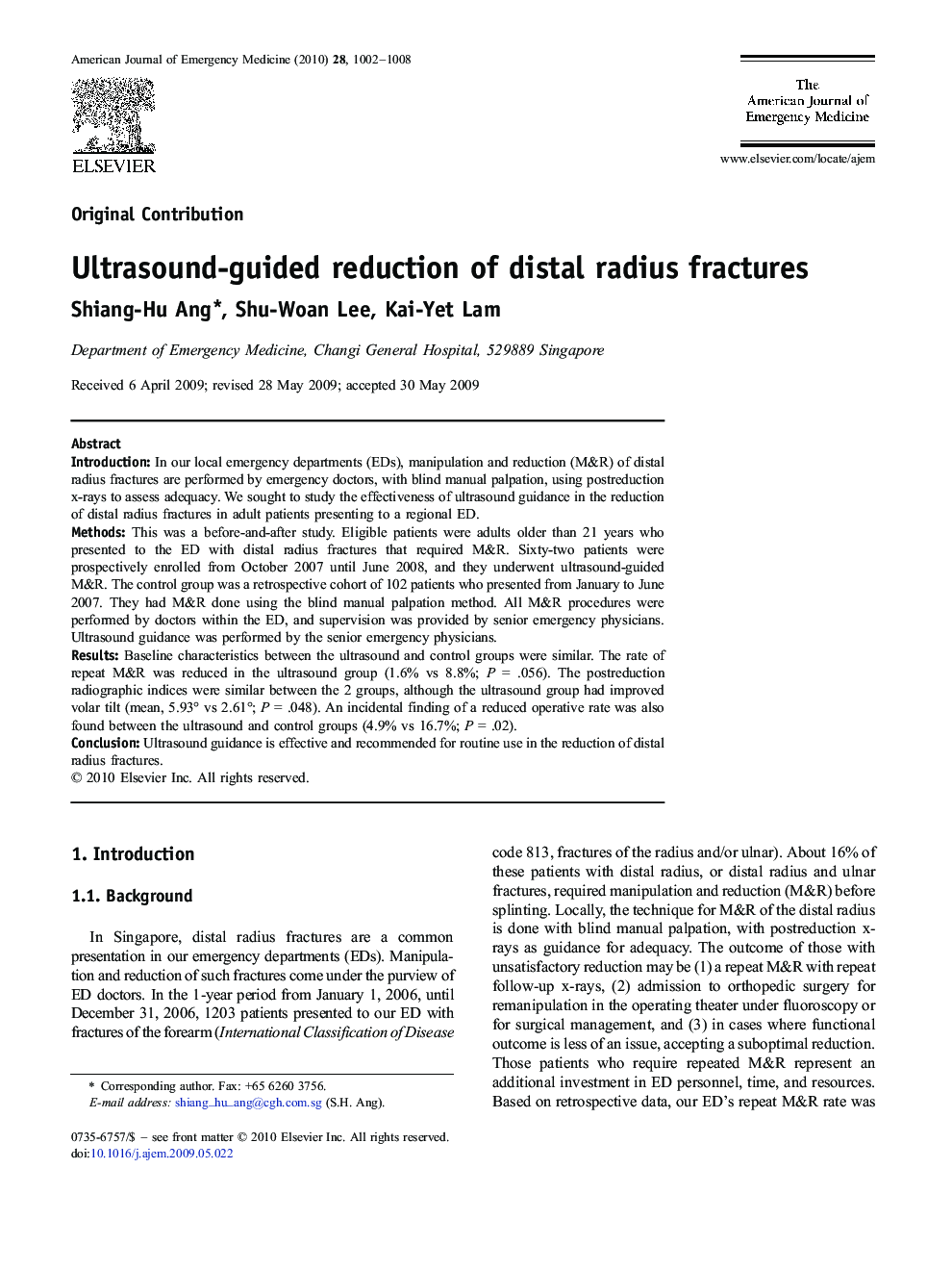| کد مقاله | کد نشریه | سال انتشار | مقاله انگلیسی | نسخه تمام متن |
|---|---|---|---|---|
| 3225832 | 1588153 | 2010 | 7 صفحه PDF | دانلود رایگان |

IntroductionIn our local emergency departments (EDs), manipulation and reduction (M&R) of distal radius fractures are performed by emergency doctors, with blind manual palpation, using postreduction x-rays to assess adequacy. We sought to study the effectiveness of ultrasound guidance in the reduction of distal radius fractures in adult patients presenting to a regional ED.MethodsThis was a before-and-after study. Eligible patients were adults older than 21 years who presented to the ED with distal radius fractures that required M&R. Sixty-two patients were prospectively enrolled from October 2007 until June 2008, and they underwent ultrasound-guided M&R. The control group was a retrospective cohort of 102 patients who presented from January to June 2007. They had M&R done using the blind manual palpation method. All M&R procedures were performed by doctors within the ED, and supervision was provided by senior emergency physicians. Ultrasound guidance was performed by the senior emergency physicians.ResultsBaseline characteristics between the ultrasound and control groups were similar. The rate of repeat M&R was reduced in the ultrasound group (1.6% vs 8.8%; P = .056). The postreduction radiographic indices were similar between the 2 groups, although the ultrasound group had improved volar tilt (mean, 5.93° vs 2.61°; P = .048). An incidental finding of a reduced operative rate was also found between the ultrasound and control groups (4.9% vs 16.7%; P = .02).ConclusionUltrasound guidance is effective and recommended for routine use in the reduction of distal radius fractures.
Journal: The American Journal of Emergency Medicine - Volume 28, Issue 9, November 2010, Pages 1002–1008